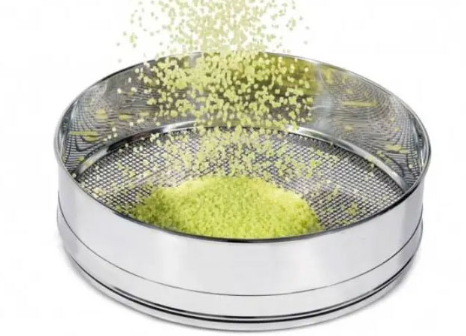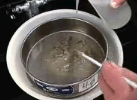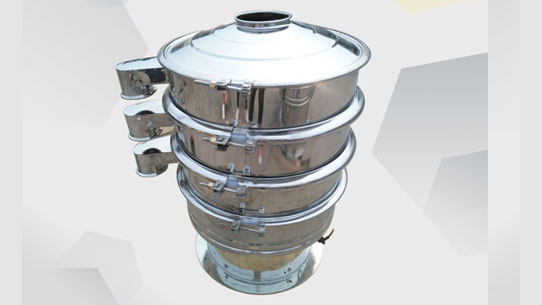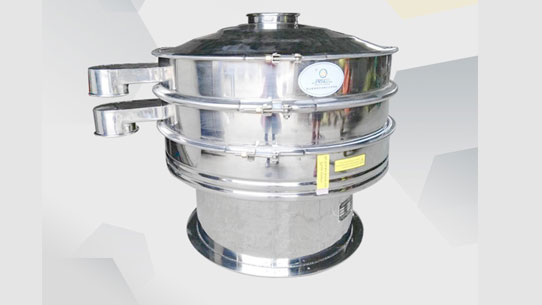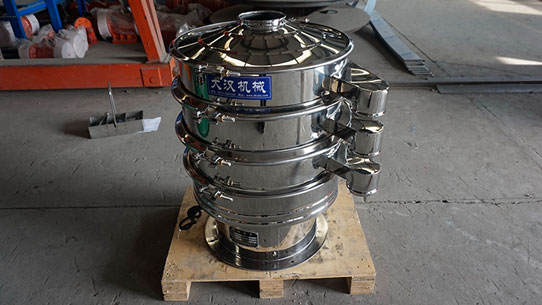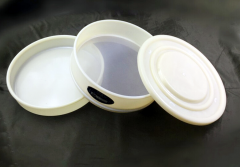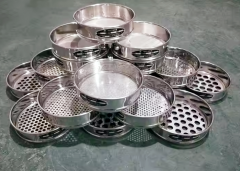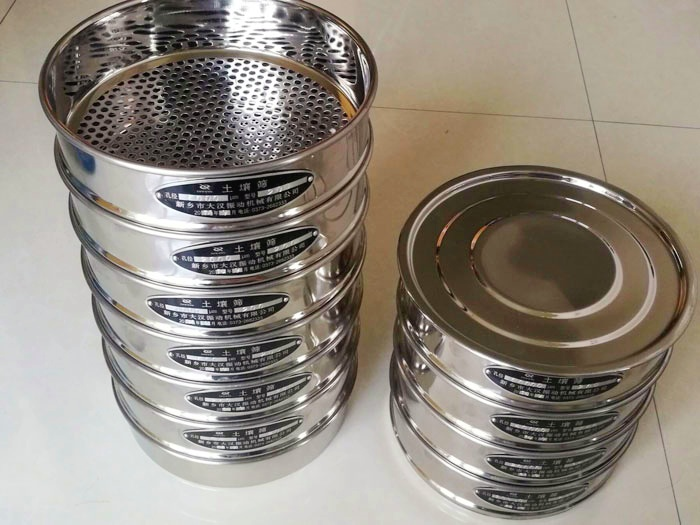How to perform soil sieve analysis
Tuesday June-10 2025 17:49:49
What is soil sieve analysis
Soil sieve analysis is a common geotechnical test method, mainly used to determine the distribution of particles of different particle sizes in the soil, so as to understand the particle composition and structural characteristics of the soil. According to the size of the particles in the soil, sieving is usually carried out using a series of standard sieves (such as 2mm, 0.85mm, 0.425mm, 0.25mm, 0.15mm, 0.075mm, etc.), from the largest particle size such as 4.75mm (gravel) to the smallest 0.075mm (the boundary between silt and sand), and particles of different particle sizes are effectively separated by dry or wet sieving.
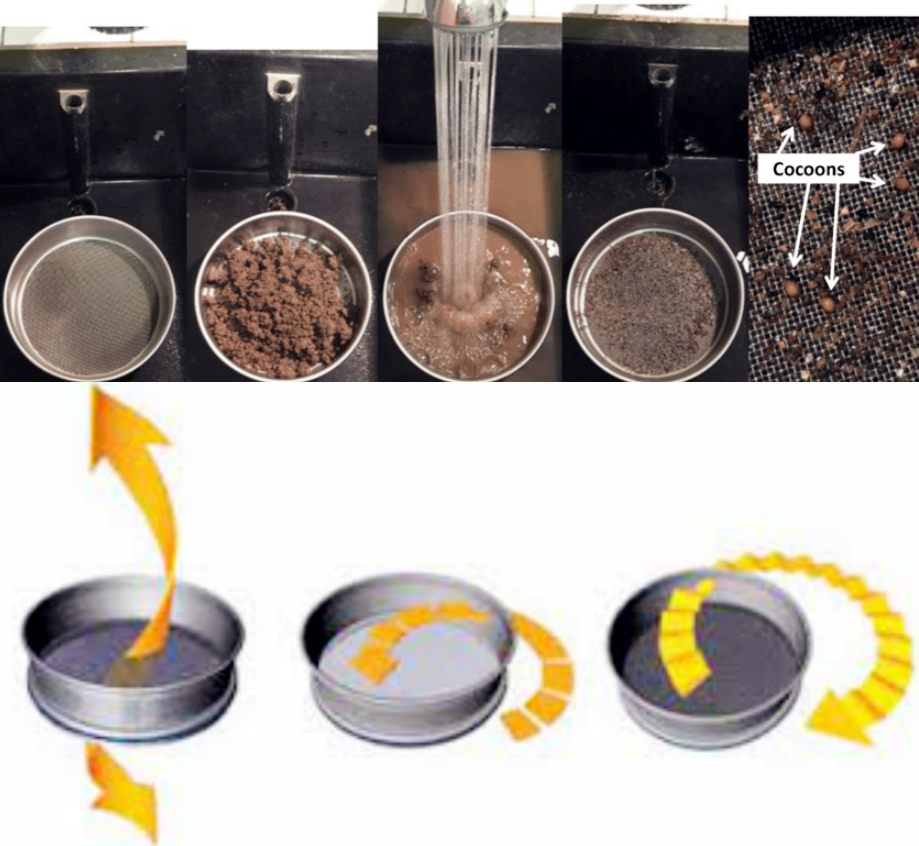
The data after screening can reflect the uniformity, gradation state, permeability, compaction and other engineering properties of the soil, which is of great reference value for judging whether the soil is suitable for building foundations, roadbed fillers, etc. The screening effect directly affects the accuracy of the soil particle gradation curve, so the selection of sieves, operation methods and sample processing must be standardized.
What are the two methods of soil sieve analysis?
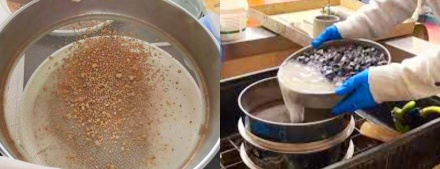
Dry screening method (suitable for coarse particles, such as sand): Pour the dried and pre-treated soil sample (usually a sample that passes a 2mm sieve) into the top sieve. Cover the lid, place the sieve group on the vibrating screen, and vibrate for 10-15 minutes to allow the particles to fully pass through the sieve of the corresponding aperture. Remove each sieve in order from top to bottom, and weigh the mass of the soil sample left on each sieve and in the chassis, accurate to 0.1g.
Wet sieving method (suitable for fine particles, such as silt and clay, especially when combined with sedimentation method): Pour the pretreated and dispersed soil suspension into a set of wet sieves (usually a sieve with a pore size less than 0.063mm, such as a 0.063mm sieve). Rinse the sieve with a wash bottle or water flow to allow fine particles to pass through and coarse particles to remain on the sieve. Collect the suspension that passes through the sieve for subsequent sedimentation analysis. Rinse the particles remaining on the sieve, dry and weigh.
Differences between two methods of soil sieving analysis
|
Project |
Dry sieving method |
Wet sieving method |
|
Image |
|
|
|
Applicable soil types |
Soils with coarse particles, no or little cohesion (such as sand and gravel) |
Contains more clay or silt, and particles are easy to agglomerate |
|
Main purpose |
Determine the content of coarse particles (> 0.075mm) in the soil |
Separate fine particles (< 0.075mm) for more accurate analysis |
|
Brief description of operation steps |
1. Dry the sample2. Mechanical or manual sieving3. Record the mass of soil on the sieve |
1. Mix the sample with water2. Wash with water through a 0.075mm sieve3. Dry the residue and dry sieve |
|
Whether to use water |
No |
Yes |
|
Is it suitable for fine particles with a particle size less than 0.075mm |
No |
Yes |
|
Advantages |
Easy to operate, fast, suitable for most coarse-grained soils |
Can effectively separate agglomerated particles, suitable for fine-grained soil analysis |
Dry sieving is suitable for rapid analysis of coarse-grained soils, but may not be accurate for clay or fine silt. Wet sieving is suitable for soils containing fine particles, but the operation needs to be careful to prevent the loss of particles.
How to perform soil sieving analysis?
Soil sieving analysis is a commonly used method for determining the size distribution of soil physical properties, which is mainly used to determine the size distribution of soil particles, that is, the percentage of particles of different particle sizes (such as sand particles, silt particles, clay particles, etc.) in the soil. This is very important for understanding the texture, water permeability, water retention, aeration and engineering properties of the soil.
1. Sample preparation

The collected soil samples are naturally air-dried, avoiding direct sunlight or high temperature baking to avoid affecting the physical structure of the soil. After air drying, remove debris such as stones, plant residues, and roots from the samples. For lumpy soil, use tools such as wooden hammers or wooden rollers to gently crush it, but be careful not to destroy the soil particles themselves, just disperse the large lumps of soil. Pass the soil sample after preliminary treatment through a 2mm soil sieve. Generally, particles with a particle size greater than 2mm are called gravel or coarse aggregate and are not included in the soil texture classification. The soil sample under the sieve is the "fine soil" part for subsequent sieving analysis.
Note: If the sample contains a high content of soluble salts (>0.5%), salt washing may be required.
2. Sample weighing
Determine the appropriate sampling amount according to the soil type. For example, sandy soil is about 60g, clay is about 20g, and the intermediate type of soil can be estimated proportionally. Put the soil sample for analysis in an oven and dry it at 105°C to constant weight (usually 24 hours), and then weigh its initial dry weight to an accuracy of 0.01g. This is the basic data for particle analysis experiments.
3. Dispersion pretreatment (pretreatment of wet sieving and sedimentation method)
For soils containing organic matter, carbonates, soluble salts or requiring wet sieving, dispersion pretreatment is required to ensure that the soil particles are fully separated and avoid agglomeration.
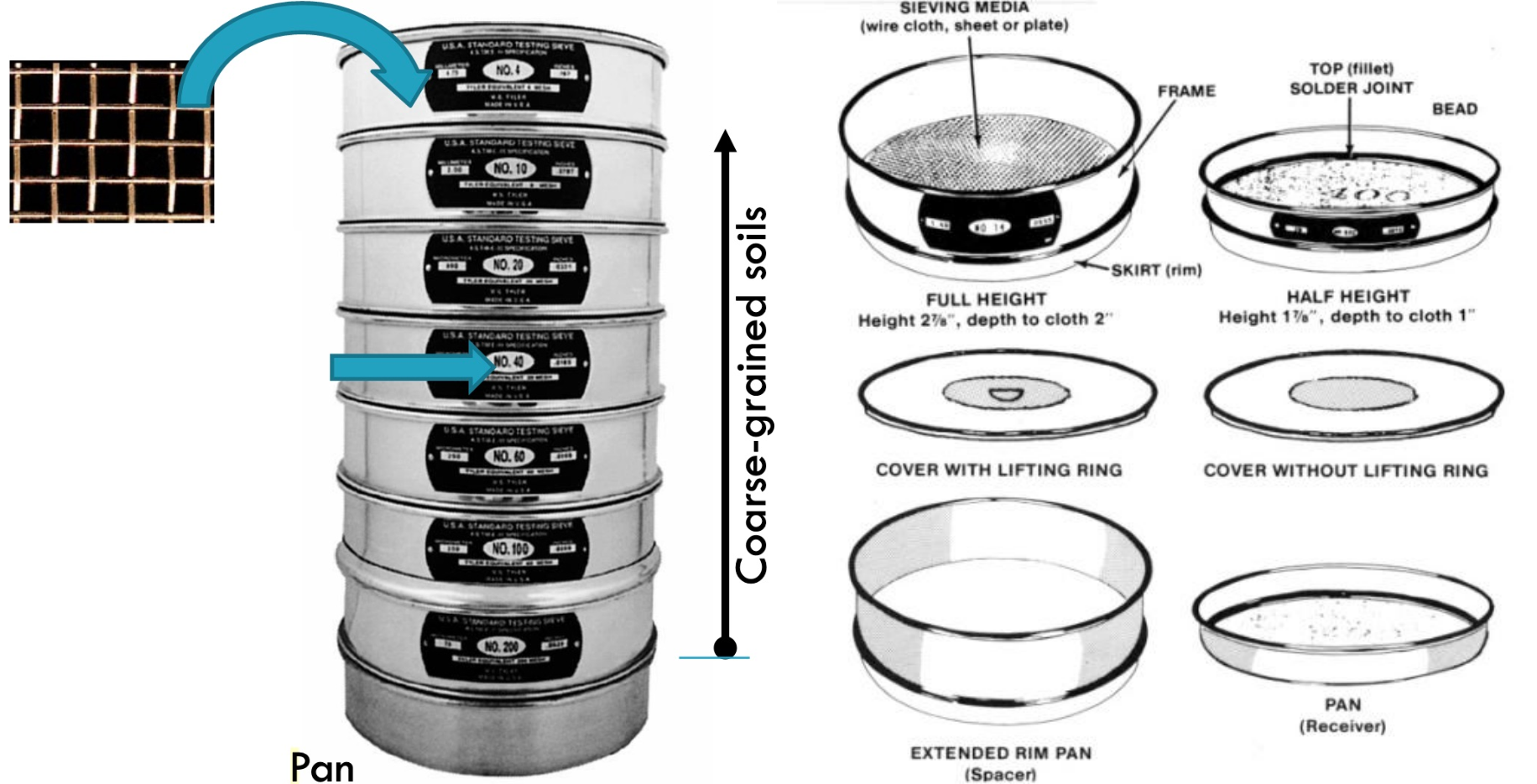
① Remove organic matter: Add an appropriate amount of hydrogen peroxide (H2O2), heat and boil or shake to decompose the organic matter.
② Remove carbonates: If the carbonate content in the soil is high, dilute acid (such as hydrochloric acid) may need to be added for treatment.
③ Dispersant treatment: Add an appropriate amount of dispersant (such as a mixed solution of sodium hexametaphosphate and sodium carbonate), shake or oscillate thoroughly to fully disperse the soil particles. It can be oscillated for 18 hours or slightly boiled for 1 hour.
4. Screening: Prepare a set of test sieves that meet the standards, usually stacked in order from large to small apertures, with the sieve with the largest aperture on the top and the bottom being the bottom plate. Common sieve hole sizes are: 2mm, 1mm, 0.5mm, 0.25mm, 0.1mm, 0.05mm (or 0.063mm), etc.

5. Sedimentation analysis (applicable to particles smaller than 0.063mm or 0.05mm): For particles that pass through the finest sieve (such as 0.063mm), due to their small particle size, they cannot be accurately measured by screening method, and need to be measured by the difference in the sedimentation speed of the particles in water.
6. Data processing and result presentation: Record the soil mass on each sieve and in the bottom plate, as well as the soil mass of each particle size measured by the sedimentation method. Starting from the sieve with the smallest aperture, add up the sieve residue mass step by step. Calculate the cumulative percentage passing through each sieve hole, draw a particle distribution curve, and determine the soil particle size parameters.
Recommended mesh number for soil sieve analysis
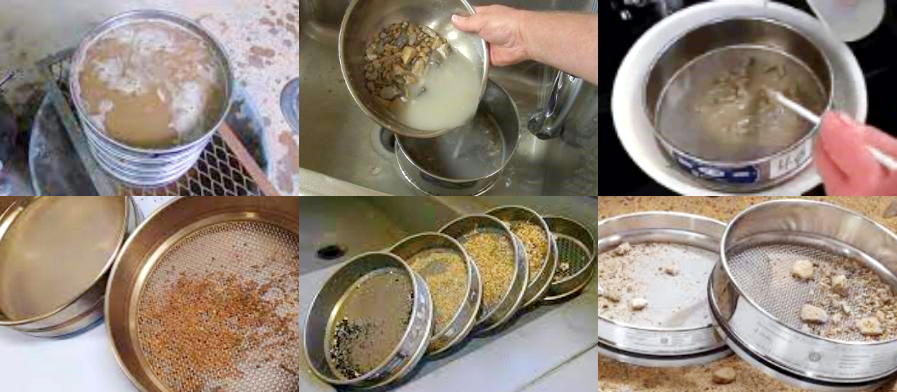
|
Sieve number (mesh number) |
aperture (mm) |
applicable particle range |
commonly used for soil types |
|
4# |
4.75 |
coarse gravel/coarse sand boundary |
gravel, coarse sand soil |
|
10# |
2.00 |
medium sand and above |
sand soil containing medium and coarse sand, gravel sand soil |
|
20# |
0.85 |
medium sand |
commonly used for sand soil |
|
40# |
0.425 |
fine sand |
mixed soil of coarse and fine sand, fill soil, etc. |
|
60# |
0.25 |
finer fine sand |
mixed particle size soil, fill soil, etc. |
|
100# |
0.15 |
transition between very fine sand and silt |
sand soil containing silt, heterogeneous fill soil |
|
200# |
0.075 |
silt soil/sand boundary |
Silt and clay screening lower limit |
|
325# (optional) |
0.045 |
Extremely fine particles, close to clay level |
Laboratory research level analysis, special geotechnical research purposes |
Soil sieve analysis is a common method for determining soil particle composition (particle size distribution), mainly used to determine soil texture (such as sand, loam, clay, etc.), usually used for soil classification, engineering geology and agricultural research. This analysis is very important for understanding the physical properties of soil, which helps to evaluate the engineering properties, permeability and suitability of soil in other applications.

